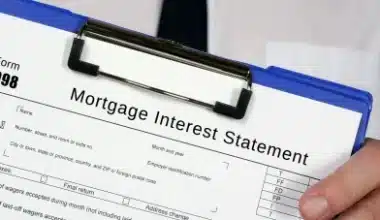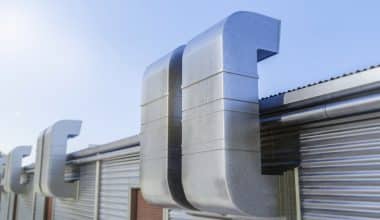The rental property management sector in the United States generates more than $99 billion in income each year. With so much money flowing through real estate rentals, it’s no surprise that several software companies have sprung up to assist investors, landlords, and property managers in staying organized, not only for daily tenant communication and management but also for tax time.
With so many jobs to accomplish and no property manager, having the right property rental property software in place is critical to making the entire process easier.
However, knowing which to choose and what to look for might be tough for any do-it-yourself landlord. That is why we examined the eleven best rental property management software platforms for landlords to assist you in determining which is best for you.
What is Rental Property Management Software?
A rental property management system is software that allows rental property owners and managers to perform a variety of essential daily tasks, such as managing and tracking tenant information, accounting and billing, maintenance, and posting vacancies online, to ensure that all operations for a given property run smoothly. Rental property management software also creates reports on activity such as monthly rent payments, income, and expenses to assist you in monitoring your property’s financial health.
What Features Should Rental Property Management Software Have?
It is critical to remember that not all rental property management tools are created equal (i.e., has the same features).
Consider the following factors while deciding on software:
- What features does a specific software have?
- Which of these features would be most useful to you?
- And what characteristics do you require (i.e. the dealbreakers)
Depending on the software, you may simply receive the fundamental functions, whereas some provide additional tools to assist you to streamline and automate various aspects of your property management activities.
Here are some characteristics of effective property management software to look for:
#1. Tenant portal and automatic rent payments
The primary benefit of rental property management software is that it makes it easier to collect rent and communicate with tenants.
The bottom line is everything, and having software that allows for speedier, more dependable, and semi-automated rent payments is crucial.
Many property management software packages provide a full tenant portal where you can collect rent and connect with tenants directly.
Tenants can then use the interface to manage rent and other duties such as pet rent, parking costs, and even maintenance issues.
Talk about effectiveness.
Rent—faster, more consistently, and with less effort on your part? There are perfect universes.
#2. Handle maintenance requests
Juggling work orders between renters and vendors can be difficult, as can following up with this individual while placing this order and responding to that vendor.
Another significant area where online rental property management software might assist is in optimizing your work order system.
Most property management software allows you to:
- Accept maintenance requests from tenants directly.
- Create work orders and include attachments like notes and photographs.
- Assign a vendor to that work order.
- Make payment to the vendor.
- Also, for information and progress updates on that maintenance request, contact tenants.
- All of your work orders are in one location, with a centralized communication platform that simplifies and streamlines the entire process.
#3. Screening of applicants and online applications
The best rental property management software not only simplifies and even semi-automates rent collection and maintenance orders, but it also assists you in attracting new tenants.
Many property management programs include capabilities such as:
- Online applications: Tenants can sign their applications and pay their application fees totally online. With a few clicks, you may check the status of such apps.
- Applicant screening: To make the overall entry process easier, numerous systems allow candidates to request and pay for their own background check when completing their application.
#4. Automatic vacancy listings
Do you require assistance sooner rather than later?
Vacant units represent a lost opportunity as well as money that is actively sliding through your fingers.
Fortunately, many rental management programs allow you to automatically advertise vacant apartments on major property listing platforms. There is no need for extra effort.
You will have less downtime between tenants and will be able to maximize cash flow.
Best Rental Property Management Software
Let’s look at the best software solutions now that we’ve covered some of the important aspects of the average rental property management program.
#1. Apartments.com Rental Manager (Cozy)
Apartments.com Rental Manager (Cozy) is a free rental property management software that enables landlords to perform routine chores such as collecting rent, screening and communicating with tenants, and dealing with maintenance needs. They also provide an expense tracking application to assist you in managing your expenses by property. Landlords can categorize each rental and keep pertinent documents such as receipts, invoices, bank statements, and more in one location.
While they are regarded to be a low-cost choice, there are some restrictions on what you can and cannot do on the platform. Apartments.com Rental Manager allows landlords to post rental listings to a total of five sites, which can reduce the likelihood of your property attracting a tenant’s notice. To combat this and improve the number of people who see your listing, manually post it on other sites or share the listing link on your social media profiles.
Now that tenants are wanting to enhance their credit while renting, an increasing number of landlords are offering them tools to report rent payments to help them improve their credit.
Apartments.com Rental Manager used to allow renters to report on-time payments via Experian, however, this function is no longer available. While this may be a cost-effective choice, you may find yourself working outside of the platform to have access to the complete range of rental tools you require.
#2. TurboTenant
TurboTenant is a property management software developed for landlords that own up to 100 rental homes. Landlords can collect rent online, use rental advertising tools, and save vital papers for free.
You can open an account for free, but preparing lease papers and collecting electronic signatures will cost you a few dollars. When it comes to onboarding tenants for your rental property, you’ll want software that offers state-specific lease templates that conform with local legislation to guarantee that all agreements are legally binding. Landlords can use TurboTenant’s state-specific templates for $39 per tenant and have those same documents electronically signed for $9 — but that still adds up to nearly $50 for one lease agreement.
TurboTenant won’t be much assistance if you’re looking to offload any of this cost through referral credits. Rather than giving landlords credits to use on the platform, TurboTenant users can receive a $25 Amazon gift card when they recommend a friend.
#3. TenantCloud
TenantCloud is a property management software with three monthly subscription options at varied price points. Landlords can create a free account in the form of a “Forever free trial,” but to access all of their features, you’ll need to upgrade to their Standard subscription for $9 or an Advanced subscription for $35.
It is crucial to note that the free account does not feature any services designed to make landlording easier. You’ll need to upgrade your subscription to Standard or Advanced to obtain software fundamentals like listing lead management, e-signature capabilities, and accounting services.
Landlords can sync their Quickbooks account to TenantCloud to track all accounting with the Advanced membership, but it costs $420 per year. This cost does not include tenant screening or rental reporting to help calculate a fair rent estimate, so you’ll have to pay much more to manage your rental property.
Because of the variety of features available, maintaining more than one property on TenantCloud may take some time for individuals who are new to the system. Finally, you might come across a more user-friendly platform with more features and a lower price tag.
#4. Rentler
Rentler unites landlords and tenants from throughout the country in one convenient location. Landlords can also use the platform to promote and advertise their properties, collect online rent payments, and handle maintenance requests.
Rentler is free for landlords and tenants to use, but rental listing capabilities range from $15 to $25 per day, with only the first one being free. While this fee may be affordable, rental listings are an important aspect of property management, and most rental property software platforms include this feature at no extra charge.
If you need state-specific legal forms for your property, such as a lease agreement, you must pay an additional $25 to access Rentler’s document collection.
#5. Buildium
Buildium is a rental management software designed for landlords who own at least 50 homes. While it has the same features as other of the software we discussed, the free trial period is only 14 days. Buildium accounts range in price from $50 to $460 a month, depending on the number of homes you own.
With an account, landlords can check tenants, receive basic reports, and much more. Still, using Buildium means paying anywhere from $540 to $600 a year for property management software alone, which may not make sense for landlords with fewer than ten units.
#6. Portfolio
Appfolio, like Buildium, is a cloud-based property management software that requires a portfolio of at least 50 properties to qualify for subscriptions. The minimum monthly charge is $280 per month, which means that a significant amount of your rental income will be used to pay for your management software alone.
#7. Zillow Rental Manager
On a major real estate marketplace, Zillow Rental Manager is an easy-to-use property management software. Landlords can advertise their rental properties on Zillow, Trulia, and HotPads. You can also use online applications to screen tenants, e-sign rental leases, and collect rent and other fees.
There are no restrictions on how many rental ads you can post, but only the first one is free to post; further listings cost $9.99 per week. Additionally, the platform lacks key conveniences, such as a mechanism to track maintenance requests, so you may need to employ additional software to assist with your landlording needs.
#8. DoorLoop
DoorLoop is a property management software that allows landlords to lease buildings, automate bookkeeping, handle work orders, and much more. To access the platform’s tools, you must sign up for either the Starter, Pro, or Premium plan. When paid yearly, the Starter plan costs $49 per month, while the Pro and Premium plans cost $79 and $109 per month, respectively.
While the convenience of the use of DoorLoop is enticing, the platform falls short in some areas when compared to Avail. For example, while DoorLoop does not support lease agreement templates, Avail can help you save time once you’ve found a tenant for your rental.
#9. RentRedi
A property management service for landlords and real estate investors that need assistance managing their rental properties. You’ll be able to use the platform to submit listings on Realtor.com® and Doorsteps, collect rent payments online, and sign and store leases. It’s worth mentioning that RentRedi requires a membership plan, which costs $9 per month annually, $15 per month semiannually, or $19.95 per month pay-as-you-go.
Before you invest in RentRedi, make sure you understand the differences between RentRedi and Avail. Because the former lacks several critical capabilities, you may find that managing your property using Avail is the better alternative.
#10. Rentec Direct
Rentec Direct’s basic plan is a free platform that helps you stay organized with rental property accounting and online file management if you own fewer than ten properties. Unfortunately, some other functions are only available as part of a paid subscription. Rentec Pro’s monthly fees are determined by the number of properties you manage. One to ten units will cost $35 per month, eleven to twenty-five units will cost $45 per month, and so on. Users can choose a yearly billing period for a 10% savings, however, this may still be expensive for landlords with bigger portfolios.
Because a premium plan provides significantly more perks, you may need to outsource extra solutions to assist you to manage your rental. Remember that the larger your portfolio, the higher the monthly Rentec Direct subscription cost.
Who Should Use Rental Property Management Software?
Rental property management software can be used by both novice investors with small rental portfolios (fewer than ten units) and major commercial property management businesses. Various companies develop software with specialized capabilities that are best suited for specific types of landlords, property types, and portfolio sizes. These systems can help a do-it-yourself investor as well as a team of users that includes the owner, property manager, facility maintenance, and leasing agent, to mention a few.
What Is the Cost of Rental Property Management Software?
The majority of property management software solutions charge between $1 and $2 per unit managed. When shopping for a program, keep in mind that most providers will charge you a monthly minimum cost, usually in the $200 to $250 area, even if you don’t have enough properties to justify such a high rate. Most programs charge the landlord team, but TurboTenant is an outlier, shifting the costs to the renters. Optional features are available for both the landlord and the renter to pay for and utilize with TurboTenant and practically all other property management software businesses.
How We Selected the Best Rental Property Management Software
We evaluated 15 rental property management software providers to identify the seven best in these common categories. Lower-cost programs with minimum fee requirements outperformed more expensive programs. We also chose apps with excellent ratings and testimonials for their ease of use and configuration. We required that the software we selected had a strong reputation for prompt customer service, integrations to broaden and expedite the rental management process, and a comprehensive feature set to allow efficient and inexpensive property management.
Conclusion
In most situations, rental property management software is a cloud service that enables landlords with small or big portfolios to manage their processes, from lead generation to occupancy, payment, maintenance, insurance, and financial accounting and reporting. Many software platforms specialize in specific specialty scenarios, such as modest single-family home portfolios or huge mixed commercial portfolios.
It’s critical to look into not only what your portfolio looks like today, but also what you intend it to look like in the future. Will the platform you select be able to scale with you, and if so, will it be inexpensive while you’re still in the small portfolio phase? In our analysis, we attempted to answer these questions for you.
Rental Management Software FAQs
How does rental management software work?
Allows tenants to pay their rent online. The software accepts e-checks, credit cards, and electronic cash payments. Owners can customize their portal. Owners can immediately view financial information, work orders, and bills after logging in.
Does QuickBooks offer rental property management software?
Simply put, QuickBooks has the capability of managing rental property accounting transactions. You can set up properties as customers, tenants as sub-customers, and classes to track various transaction kinds in the software.
What are the three components of rental property management?
- Marketing and Financial.
- Tenant and Occupancy.
- Facility.
- Administration & Risk Management.
- PROPERTY MANAGEMENT TOOLS: Uses, Free Tools & Pricing
- HOW TO START A PROPERTY MANAGEMENT COMPANY: Tips for Starting a Property Management Company
- BUYING RENTAL PROPERTY: Tips For Buying Rental Properties
- RENTING WITH BAD CREDIT: Even With a History of Evictions
- BUYING A RENTAL PROPERTY: Tips on Buying a Rental Property (Updated 2023)
- TURBOTENANT RENTAL LISTING: Features, Pricing & 2023 Reviews






